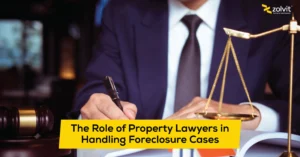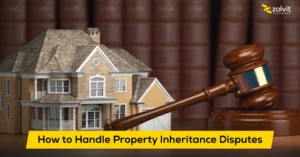Marshalling in property law is an equitable principle treatment among creditors. This principle obliges the creditor who has a charge over two properties to resort for repayment from those which do not belong to another charge-holder. This ensures that no creditor appears superior to another merely because he has a lesser number of assets available for repayment. It cancels the creditors’ priorities and requires them to rely on the asset which does not affect those with less secured claims.
This blog covers the doctrine of marshalling, its application in secured transactions, differences from contribution, and its role in property disputes. Learn how marshalling affects property rights, legal frameworks, and common issues in debt recovery.
What is Marshalling?
Marshalling is the principle that where several properties are mortgaged and one is sold free from encumbrance, the mortgagee must recover the amount due from the rest of the mortgaged properties. Thus, the creditors must consider the properties which are still under the mortgage before attaching others.
Doctrine of Marshalling
Marshalling is a legal doctrine that ensures that a lender is not deprived of rights under a mortgage when the mortgage is entrenched with other properties as security for other debts. Thus, it is intended to protect those creditors who have restricted access to a debtor’s property.
- Multiple properties, one debtor: This principle can apply where there are several properties owned by a debtor but one creditor holds security over all of them so only one is available to an additional creditor as security.
- Prioritising the “junior” creditor: It allows a junior creditor with limited assets to demand that a priority creditor recover its debt from the assets not subject to charge by that junior creditor before recovering from the junior creditor’s secured asset.
- Equitable principle: Marshalling considers an equity remedy, which is used when the circumstances of the case would show that the rights of creditors need to be adjusted.
Importance of Marshalling in Property Transactions
Marshalling holds great significance in property dealings especially in the matters pertaining to secured debt as well as mortgage enforcement. It gives the creditors the ability to recover their debts in a just manner while maintaining legal balance during financial transactions.
- Provides debt recovery by maximising creditor social rights.
- Prevents conflict of interests on secured assets among creditors.
- Maintains a legal balance in the event of multiple claims secured against the same individual debtor’s assets.
- Effectively structure repayments so as to minimise financial risk.
- Affording stability to property transactions and mortgage enforcement.
Legal Concept and Relevance of Marshalling
As an equitable remedy, marshalling protects creditors while debt recovery is conducted correctly. It prevents financial losses and is widely used in secured lending and insolvency cases.
- Designed to promote equity between competing creditor claims.
- Ensures that debts are paid in an equitable manner, in turn preventing a further financial loss to a creditor.
- There are wider applications in law concerning mortgages and secured lending.
- In the context of insolvency and liquidation of assets, marshalling has further applications.
- Ensures no creditor gets a disadvantage while recovering their debt.
Marshalling vs. Contribution
Both marshalling and contribution relate to the collection of debts; however, they apply in different financial and judicial contexts. Differentiating between the two will help creditors and debtors understand how they can best resolve their property disputes.
Differences Between Marshalling and Contribution
| Aspect | Marshalling | Contribution |
| Definition | A creditor with multiple securities satisfies their claim from assets not available to another creditor. | Distributes repayment responsibility among multiple debtors who share a common liability. |
| Purpose | Protects creditors with limited security options. | Ensures fair cost-sharing among co-debtors. |
| Application | Used in secured transactions where multiple creditors have claims on a debtor’s properties. | Applied when multiple parties are jointly liable for a debt. |
| Beneficiaries | Creditors with fewer security options. | Co-debtors or guarantors sharing financial obligations. |
| Legal Effect | Prevents advantage by requiring a creditor with more security options to prioritise certain assets. | Ensures no single debtor bears the entire financial burden alone. |
| Scope | Relevant in mortgage laws, insolvency, and secured lending. | Used in joint debt arrangements, guarantees, and indemnities. |
| Focus | Allocation of secured assets for debt recovery. | Equitable division of repayment responsibilities among co-obligors. |
Legal Implications of Marshalling vs. Contribution
The consideration of legal consequences of these doctrines is to ensure the debt resolution and the protection of creditor rights.
- The way secured assets are sold determines marshalling; this affects the ranking of creditors.
- Contribution allows for the proportionality of shared liabilities for the payment of one obligation among multiple debtors.
- Marshalling is applied where one creditor benefits unfairly from a right to resort to more than one property.
- Contribution comes into play to prevent the one debtor from bearing the entire burden of a shared debt.
- Both doctrines provide for the fair distribution of the subject matter in financial disputes, but they apply to different legal contexts.
How to Apply Marshalling and Contribution in Property Disputes
Both principles help maintain debt recovery and prevent undue financial burden on any party. Marshalling protects junior creditors, while contribution ensures co-owners share liabilities equitably.
Applying the Marshalling Principle:
When a debtor has multiple properties and a senior creditor has security over both, while a junior creditor has security over only one, the senior creditor should first recover their debt from the property not accessible to the junior creditor. The proper thing here would be for the senior creditor to pay from the portion inaccessible to the junior creditor before allowing for the junior creditor’s claim.
Applying the Contribution Principle:
Any co-owner who pays off a mortgage, which they have shared with other co-owners, has the right to demand a proportional repayment from the co-owner who has not paid their share. It will be expected that the amounts to be recoverable from any co-owner in this case are proportional to their respective shares in the ownership of the property. Actions may be taken to recover from them.
Legal Framework for Marshalling
Marshalling has its own legal regulation that defines the parameters under which it exists for property transactions. An understanding of the enabling statute and its limitations would assist creditors and debtors in exercising their rights.
Role of Section 56 and Section 81 of the Transfer of Property Act, 1882
These sections would set up the theory of marshalling by defining the rights of secured creditors when more than one property is renounced in consideration for a debt obligation.
Legal Principles Underlying Marshalling
The doctrine also rests upon equity to create a fair treatment of creditors, giving a junior creditor the priority to advance on a security without any unfair corresponding disadvantage.
Limitations and Exceptions to Marshalling under TPA
Certain requirements link it under marshalling, as well as certain exceptions such as those relating to the risk of third-party rights or undue hardship in the imposition of this doctrine.
Types of Marshalling in Property Law
Marshalling applies in different property law scenarios, debt recovery and creditor protection. The 3 types of marshalling vary based on the nature of security, mortgage structures, and real estate dealings.
Marshalling of Securities
This scenario applies to creditors claiming over different secure assets such that the senior creditor must first exhaust his debt from unavailable assets to junior creditors before proceeding to recognition.
Marshalling in Mortgages and Liens
In the mortgage and lien sense, marshalling applies when a creditor has many security options. In this case, the creditor has to get his claims on properties that are inaccessible to another creditor before proceeding to shared security.
Marshalling in Real Estate Transactions
Marshalling applies because sales and transfer of properties show fairness when the multiple competing claims from creditors arise against having any interests over the real estate asset from which extortionate financial losses can result thereby
How Marshalling Affects Property Rights
The dignity of the law requires debt collection, marshalling demands that a creditor with security over several properties first recover against property unencumbered by a security interest of another creditor, thus ensuring that a creditor with a claim on only one property will not be outdone in the distribution of assets.
Impact of Marshalling on Property Ownership
Marshalling essentially has an influence on the manner in which creditors recover the debt from a debtor’s asset, thereby affecting the property ownership rights.
- It can restrict a creditor’s ability to claim certain assets first.
- It ensures fair asset distribution when multiple creditors have claims.
- Property owners may face limitations on how secured properties are used.
Consequences of Marshalling on Property Title and Value
Marshalling may have a direct implication on the legal status and marketability of the property, particularly in situations where there are more than one creditor.
- Property titles may be subject to additional legal scrutiny in disputes.
- The property value will change concerning creditor claims.
- Risks of marshalling ought to be evaluated by buyers and investors in property transactions.
Marshalling and Property Transfer
A property that is subject to marshalling must be transferred legally and financially to avoid any more future complications regarding it.
- Creditor-repaying liabilities may delay transfer payments.
- Prospective buyers should as well find out if marshalling is applicable before acquiring mortgaged property.
- Conducting legal due diligence is also important to avoid claims that are unexpected.
Common Issues in Marshalling and Property Law
Marshalling is important in bringing equitable relief to a creditor, although it often leads to disputes and complications in property transactions. Therefore, the major common disputes and their legal resolutions can be considered to arrive easily at the level of complexity.
- Disputes arise when creditors disagree on whether marshalling is applicable, particularly where the rights of a senior creditor may be affected or in varying legal interpretations.
- Properties of multi-ownership cause legal complications making it difficult to ascertain the enforcement of marshalling.
- A creditor may call for redemption against a preferential asset in conflict with others arguing that it prejudices their security interest.
- The implementation of marshalling in property transactions arises from an unclear debt hierarchy, various legal disputes arising among the owners of property, and inadequately documented arrangements.
- The courts scrutinise property agreements in order to ascertain creditor priorities.
- Creditors may resort to mediation to settle and avoid a prolonged dispute.
- Laws like the Transfer of Property Act provide guidelines for enforcement.
Role of Property Lawyers in Marshalling Issues
Following the law, property lawyers enforce marshalling rights equitably so that disputes do not arise, and creditors’ interests are protected. Their skill sets include legal advice, drafting contracts, and dispute resolution.
Legal Advice on Marshalling Rights
- Guide creditors on their rights in multi-property claims.
- Advise creditors on their rights regarding multistate claims.
- Explicate on the specific aspect of marshalling in the secured transactions context.
Drafting and Reviewing Contracts with Marshalling Clauses
- Guiding creditors with respect to marshalling applies to their rights in multistate claims.
- Clearly define the rights of marshalling in agreements.
- Review contracts so that conflicts do not arise.
Legal Representation in Marshalling Disputes and Enforcement
- Ensure those that have marshalling arrangements can enforce their provisions in law.
- Represent clients on a marshalling issue in a court of law.
- Negotiate settlements between creditors with competing rights.
How Marshalling Can Be Used in Property Debt Recovery
Marshalling secures debt recovery by creditors through the ordering of claims and optimising asset distribution. It ensures that creditors with limited security are not prejudiced.
Applying Marshalling in Debt Recovery Scenarios
Marshalling helps creditors minimize debt recovery efforts to non-securitized assets, increasing the possibility of repayment.
Marshalling as a Tool for Securing Additional Collateral
Through the marshalling process, creditors are empowered to improve their chances of recovering debts by gaining access to other assets that have been pledged to unsecured creditors. It reduces overall financial risk and allows for equitable sharing of protected assets.
- Creditors can claim repayment from properties not encumbered by other creditors.
- It helps in securing additional collateral when primary assets are insufficient.
- Reduces financial risk by offering alternative repayment options in secured transactions.
The Role of Marshalling in Multi-Creditor Disputes
Marshalling is thus important in resolving disputes arising from conflicting demands from different creditors on debt claims. This ensures even satisfaction of debts without harming or disadvantageing a particular creditor.
- Order of payment is made and just, depending on hierarchies of creditors.
- Reduces litigation by providing an orderly process in multi-creditor claims.
Conclusion:
Marshalling in property law ensures treatment of creditors in secured transactions. It prevents senior creditors from disadvantaged junior creditors by choosing assets strategically. This principle in mortgage enforcement and insolvency cases. However, legal complexities can arise in its application. Zolvit’s experts can help you marshalling rules and protect your financial interests.
- Marshalling in property law is an equitable principle treatment among creditors.
- Property lawyers ensure marshalling rights are enforced fairly to prevent disputes.
- Contracts with marshalling clauses are drafted and reviewed to avoid conflicts.
- Buyers and investors should assess marshalling risks in property transactions.
- Property transfers involving marshalling require legal due diligence to prevent disputes.
- Marshalling ensures fair debt recovery, preventing one creditor from disadvantaged another.
- Property ownership rights may be affected by how creditors recover debts.
FAQs Related to Marshalling In Property Law
What is the legal process for foreclosure in property law?
Foreclosure involves a lender taking legal action to recover the balance of a loan when a borrower defaults, typically by selling the mortgaged property through a court process or auction.
What happens when two creditors have claims on the same property?
If two creditors hold claims, the senior creditor gets priority, but the junior creditor may invoke marshalling to access alternative assets for debt recovery.
How is a charge on property different from a mortgage?
A charge is a security interest without transferring ownership, while a mortgage involves transferring an interest in the property as security for a loan.
Can property owners settle mortgage disputes without going to court?
Yes, disputes can often be resolved through negotiation, mediation, or settlement agreements with lenders instead of litigation.
What role does the title deed play in property transactions?
The title deed proves ownership and records any encumbrances, such as mortgages or liens, affecting the property’s legal status.
How does the doctrine of merger affect property rights?
The doctrine of merger states that when a greater and lesser estate unite under the same owner, the lesser interest (e.g., leasehold) merges into the greater one (e.g., freehold).
How can I protect my property from competing claims or liens?
Conducting title searches, registering ownership, obtaining legal advice, and clearing debts associated with the property can help prevent competing claims.
What is an example of marshalling in property law?
If a creditor has claims on two properties but another creditor has access to only one, marshalling ensures the first creditor recovers from both properties, preserving the second creditor’s access to the shared asset.





